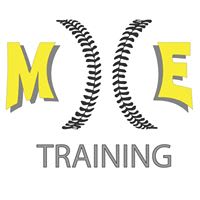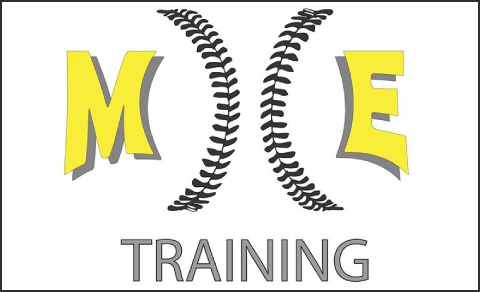So, the idea of advanced metrics is nothing new to the game of baseball. It has been part of the lexicon of the industry for over a decade and there’s a litany of research done on the matter. This article is not arguing the merits of number-crunching in the game of baseball. For that, I would highly recommend Brian Kenny’s Ahead of the Curve, which does a tremendous job of outlining why Major League Baseball does not value statistics that we grew up with such as RBI and wins.
This article is, however, arguing why there’s no reason to get nervous that the implementation of sabermetrics in the professional ranks will have a trickle down effect on amateur baseball.

I feel that I am uniquely qualified to speak on this topic since I previously worked for Baseball Info Solutions in Coplay, PA where my job was track every possible result on a field right down to the movement of the defensive players which would then be packaged up and sold individually to Major League teams.
Since that time, I’ve spent my life around the amateur baseball circles. I’ve watched hundreds of high school and college games and now that I am scouting for the San Diego Padres I am uniquely positioned to put my effort into studying how skills will translate to the next level.
There’s a few reasons why I feel strongly on this matter. The primary reason is because I am a former player that has been on the field. I know the importance of the mental aspect of the game and how that contributes to success (or failure) on the field.

Additionally, a lot of parents that I have encountered at games appear genuinely concerned that the advanced stats will prevent their son from reaching the next level.
I will break down a few reasons why you should not worry about that.
- Major League Baseball teams ran out of competitive advantages
What was the primary reason that the New York Yankees won three consecutive World Series and four out of five from 1996-2000?
It’s easy to say they had the best players, but they had the best players because their financial advantage allowed them to reap the rewards of fruitful free agent classes and also draft players that fell to them later in the first rounds thanks to their asking prices.

Prior to the practice of offering contract extensions to pre-arbitration eligible players, free agent classes were routinely filled with the best players in baseball. In 2018, that is not generally the case as teams like the Los Angeles Angels will lock up a player like Mike Trout at age-24 so that he doesn’t leave in his age-25 season. Now, players will become a free agent at age-30 and front offices are loathe to pay for the back of their baseball card.
Without the “slot recommendations” that are in place now in the MLB Draft, the Yankees (or any other team that had the financial resources) could draft a player that wanted a seven-figure signing bonus in the later rounds. This is an unfair advantage that the current Collective Bargaining Agreement (CBA) ended.
Another advantage they had was their ability to sign international free agents to outrageous contracts. Granted, sometimes it backfired (Kei Igawa), but more often than not, being able to pay exorbitant amounts of money to premium talent is a way to infuse talent into your organization.

Now that the CBA prevents that from happening with the new posting rules, that is no longer a loophole.
What teams began doing to combat those advantages was to draft exceptionally well at the top of the first round for several years in a row (Tampa Bay Rays) until their Major League roster is inundated with premium talent. The other way–which costs far less dollars–is to value statistics that other organizations did not.
Employing a “research and development” (R & D) team would, in theory, allow you to target players that were going unnoticed by teams that valued more traditional statistics. The teams that were considered the most progressive (Oakland Athletics, Tampa Bay Rays, Chicago Cubs, Boston Red Sox) began to have sustainable success.
While this worked for a while, the rest of Major League Baseball caught on. Teams no longer were hiring former players to make personnel decisions, but Ivy League scholars. Look no further than the Philadelphia Phillies who fired Ruben Amaro Jr and replaced him with Matt Klentak, who was a 35-year-old from Dartmouth College. And the Phillies were considered one of the final organizations to fully embrace advanced statistics. These brilliant minds were able to run the organization less like a sports franchise and more like a science lab.
Now that virtually every baseball team employs an “R & D” department, this advantage is no longer available.
At the amateur level, this does not exist. Certain programs are able to stay ahead of the curve by having brilliant minds making their decisions. There still exists a significant talent gap between certain programs and until all programs are being run by Ivy School scholars, programs will not be relying on sabermetrics.

2. Most Programs Rely on the Eye Test
The “eye test” is a popular phrase often used to devalue the significance of advanced stats.
Everyone that has spent enough time watching baseball knows a good player when they see it. For that reason, it’s understandable why the new state of advanced stats would strike a nerve. You don’t want somebody to tell you that your opinion is wrong. I get that, but I feel that the truth lies somewhere in the middle. It is possible that the numbers can tell you something that your eyes led you to believe. Such as, what constitutes a good defensive outfielder? Sometimes a guy makes a great diving catch and that memory allows you to overlook some miscues in the future. Conversely, maybe a costly overthrow makes you overlook an outfielder that covers a ton of ground with a great first-read. With that being the case, that’s why the invention of STATCAST is so great. Being able to see how many feet Byron Buxton can cover and what his maximum sprinting speed eliminates the guessing game. What’s wrong with having more information?
From a pitching standpoint, the idea of “spin rate” has helped extend several pitchers’ careers. The two most prominent ones are probably Rich Hill and Collin McHugh–two pitchers hanging on by a thread to their playing careers that were told that they were wasting their time pitching traditionally. Once they started to throw their breaking balls more often than their fastball, it rejuvenated their careers and allowed them to experience prosperity at the highest levels.

At the same time, that information is not available to colleges. Thanks to certain technologies, we can now measure bat speed, exit velocity, launch angle and the overused elbow ligaments of amateur athletes, but we probably won’t have the implementation of defensive metrics or spin rate at the amateur level.
Due to that, programs are still going to rely on the beloved “eye test” for the foreseeable future.
3. If you are worried about these advancements exposing your deficiencies, maybe you can focus on improving those weaknesses
I hear sometimes that people are concerned that the proliferation of information will bring to light some of the flaws in the athlete’s game, thus making them less appealing to coaches at the higher levels. If this is the case, then maybe it should be viewed as a positive and you can begin to improve on those weaknesses. If you are not willing to work on the weaknesses, then professional baseball wasn’t the right career for you anyway.
With that being the case, I’m here to tell you that the implementation of advanced stats is not ruining the game of baseball it is simply an evolution of the game. As far as the effect on college recruiting and the amateur level in general, I don’t see the chance of significant change.













